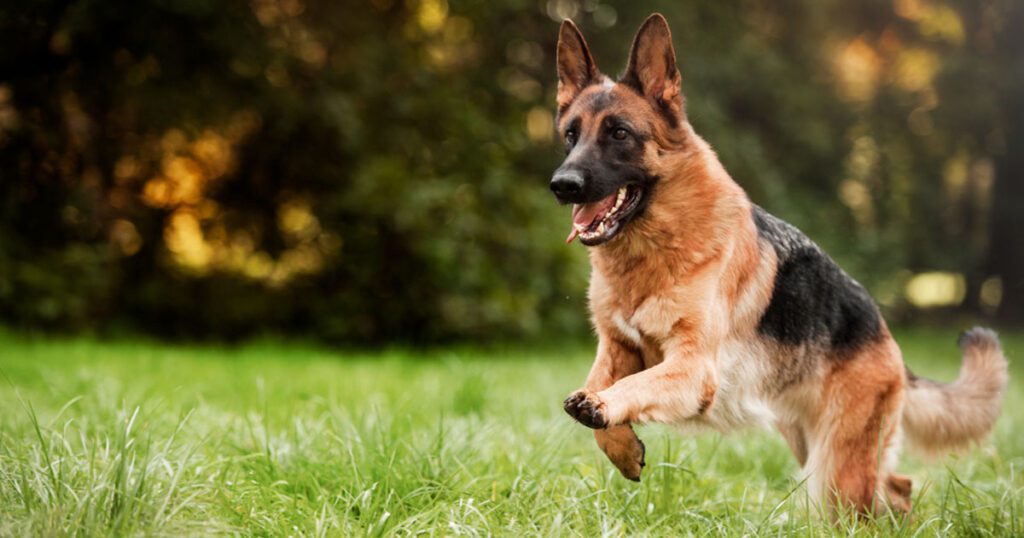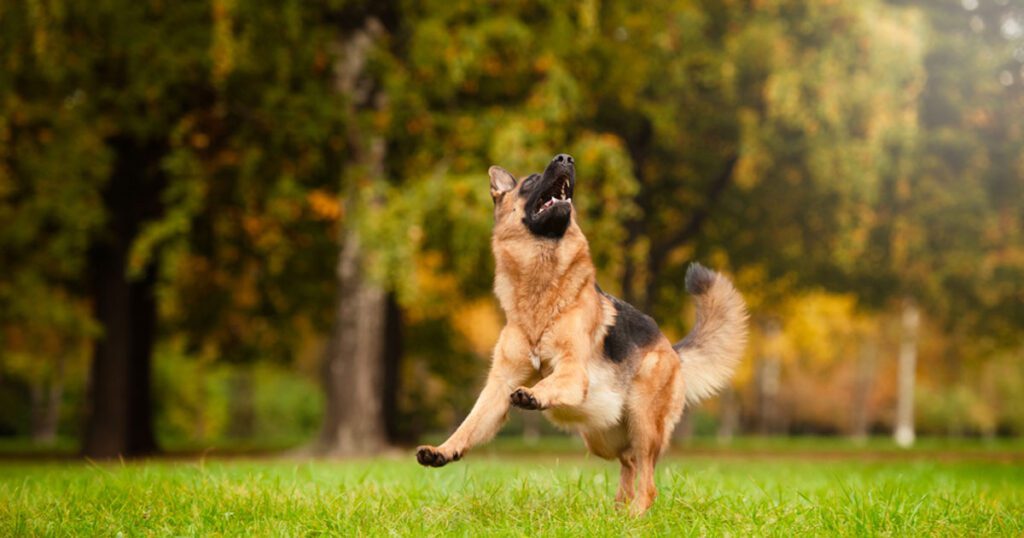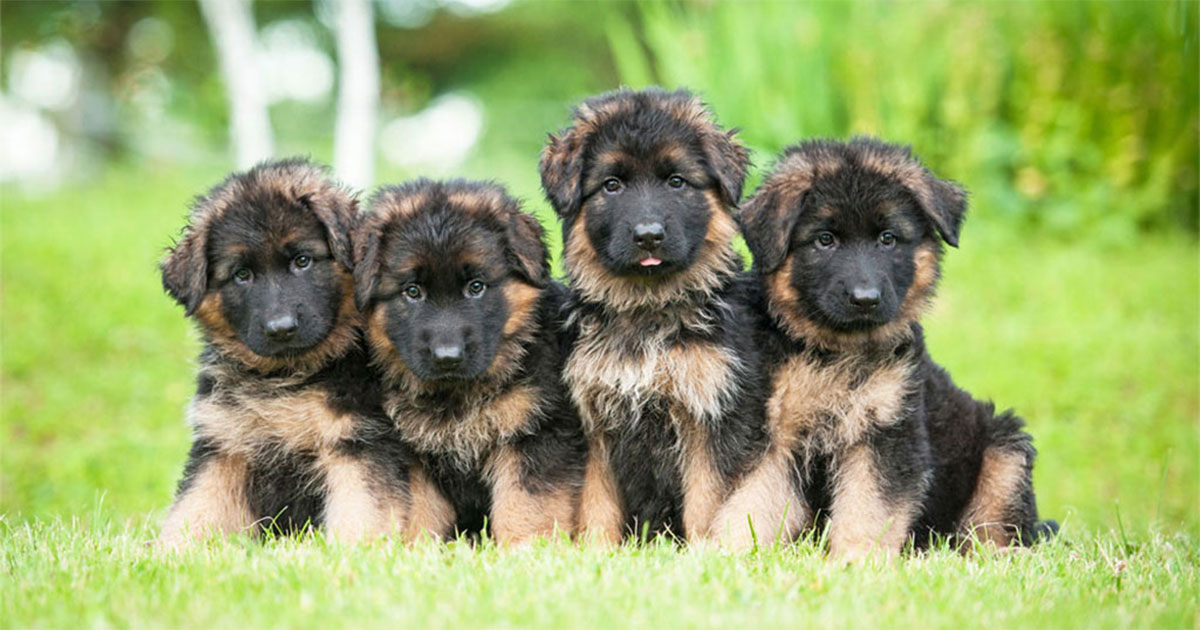German Shepherds are renowned for their intelligence, loyalty, and versatility. Whether you’re a proud German Shepherd owner or considering getting one, it’s natural to wonder how many puppies this breed can have in a single litter.
In this article, we will delve into this topic and explore various factors that can influence the litter size. From breeding considerations to the whelping process and caring for newborn puppies, we will provide you with all the information you need to know about German Shepherd litters.
Table of Contents
German Shepherd Puppies: A Look at Litter Sizes
German Shepherds, renowned for their intelligence, loyalty, and versatility, are a popular choice among dog lovers. If you’re considering adding a German Shepherd to your family, you may wonder how many puppies they typically have in a litter.
On average, German Shepherds give birth to litters ranging from 5 to 10 puppies. However, it’s essential to remember that this number can vary depending on several factors. Genetics, age, health, and individual variations can all influence litter size.
While some German Shepherds may have smaller litters with just a few puppies, others may surprise their owners with larger litters containing even more adorable bundles of joy.
During the gestation period, which lasts approximately 63 days, it’s crucial to provide proper care and nutrition to the expectant mother. Regular check-ups with a veterinarian are essential to ensure the health and well-being of both the mother and her growing puppies.
Bringing a German Shepherd puppy into your life can be a rewarding and joyful experience. Whether you end up with a small or large litter, each puppy will undoubtedly bring love, laughter, and companionship to your home.
Factors Affecting the Size of a German Shepherd’s Litter
The size of a German Shepherd’s litter can be influenced by several factors. One crucial factor is genetics. The genetic makeup of the parents plays a significant role in determining litter size. Dogs with a history of larger litters are more likely to produce larger litters themselves.
The age of the female dog also plays a role. Generally, younger German Shepherds tend to have smaller litters, while older ones may have larger ones.
Health and nutrition are essential factors as well. A well-nourished and healthy female dog is more likely to have a larger litter. Adequate nutrition, including a balanced diet and proper prenatal care, can contribute to the overall health of the mother and the development of the puppies.
Furthermore, breeding timing and techniques can impact litter size. Proper timing of mating and the use of artificial insemination can optimize the chances of a larger litter.
It’s important to note that while these factors can influence litter size, there is always some degree of natural variation. Consulting with a veterinarian and a professional breeder can provide further guidance on maximizing the chances of a healthy litter.
The Joy of German Shepherd Puppies: How Many Can You Expect?
German Shepherd puppies are a delightful addition to any family, bringing joy, love, and endless energy. If you’re considering welcoming these adorable canines into your home, you might be wondering how many puppies a German Shepherd can have.
On average, German Shepherds can have a litter size ranging from 5 to 10 puppies. However, it’s important to note that individual variations occur, and factors such as genetics, health, and age play a role in determining litter size. Some German Shepherds may have smaller litters with fewer puppies, while others may surprise you with larger litters.
The arrival of a litter of German Shepherd puppies is an exciting event. Their birth and early development are crucial stages where their care and socialization are paramount. Proper nutrition, veterinary care, and a loving environment are essential for their growth and well-being.
Whether you’re a prospective owner or an admirer of these loyal and intelligent dogs, the sight of a German Shepherd mom nurturing her adorable pups is a heartwarming experience. So, if you’re ready to embark on a journey filled with wagging tails and playful antics, be prepared for the potential joy of a litter of German Shepherd puppies.
From Birth to Whelping: Managing a German Shepherd’s Puppies
Managing a German Shepherd’s puppies from birth to whelping is an essential aspect of responsible dog ownership. The process begins with preparing a comfortable whelping area. This should be a warm and clean space where the mother dog can safely deliver her puppies. It’s important to have clean towels or blankets readily available to keep the newborns warm.
Once the puppies are born, closely monitor their health and ensure they are nursing properly. German Shepherd puppies require a specific diet tailored to their nutritional needs, and consulting a veterinarian is crucial to ensure they receive the appropriate care.
Regular check-ups and vaccinations are essential to maintain the puppies’ health and protect them from diseases. Socialization is also vital during this period, exposing them to various environments, sounds, and people to promote their development and adaptability.
As the puppies grow, provide them with stimulating toys and activities to encourage their physical and mental development. Gradually introduce solid food and begin basic training exercises to promote obedience and good behavior.
Overall, successfully managing a German Shepherd’s puppies requires attentive care, proper nutrition, veterinary guidance, and early socialization to raise healthy and well-adjusted dogs.
Planning for a German Shepherd’s Litter: Estimating Puppy Counts
When preparing for a German Shepherd’s litter, it’s helpful to estimate the puppy count to ensure you’re ready to care for them properly. While the average litter size for a German Shepherd ranges from 5 to 10 puppies, there are several factors to consider. The size and health of the mother play a significant role, as larger and healthier dogs tend to have larger litters. The age of the mother is also a factor, as younger German Shepherds usually have smaller litters compared to mature ones. However, each dog is unique, and there may be exceptions. Consult with a veterinarian experienced in canine reproduction to get a more accurate estimate for your specific situation.
Being prepared means having enough space, supplies, and resources to accommodate the potential number of puppies. This includes providing whelping boxes, heating pads, bedding, and proper nutrition for the mother during pregnancy and nursing.
Additionally, plan for the socialization, training, and potential adoption of the puppies. By estimating the puppy count and making necessary arrangements, you can ensure a smooth and successful experience for both the mother and the adorable German Shepherd puppies.
Understanding German Shepherds
Before we delve into the specifics of litter size, let’s take a moment to understand German Shepherds and their unique characteristics. Loyal, protective, and highly trainable, German Shepherds are popular as both working dogs and family companions. They are known for their striking appearance, with a well-muscled body, erect ears, and intelligent expression. German Shepherds have a strong drive to work and excel in various roles, including search and rescue, police and military work, and as service animals.
How Many Puppies Can a German Shepherd Have?
German Shepherds generally have litters ranging from 6 to 8 puppies. However, litter sizes can vary depending on several factors. Let’s explore these factors in more detail.
Factors Affecting Litter Size
Genetics: The genetic makeup of the parents plays a significant role in determining the litter size. Some German Shepherds may carry genes that predispose them to larger litters, while others may have smaller litter sizes.
Age of the Female: The age of the female German Shepherd can influence the litter size. Younger females may have smaller litters, while mature females tend to have larger litters. It’s important to note that breeding should only be done when the female is physically and mentally mature to ensure the best chances of a healthy litter.
Health and Nutrition: The overall health and nutrition of the female before and during pregnancy can impact the litter size. Proper veterinary care, a balanced diet, and appropriate supplementation are essential to support the mother’s health and the development of healthy puppies.
Breeding Methods: The breeding method used can also influence litter size. Natural breeding allows for natural selection and may result in slightly smaller litters. On the other hand, artificial insemination techniques can be used to increase the chances of conception and potentially result in larger litters.
Previous Litter Size: The size of previous litters can provide a rough estimate of what to expect in subsequent pregnancies. While this isn’t always a definitive indicator, it can give breeders an idea of the potential litter size.

Breeding German Shepherds
Breeding German Shepherds requires careful planning, knowledge, and consideration of various factors. If you’re a breeder or planning to breed your German Shepherd, here are some key points to keep in mind:
Selecting the Right Pair
Choosing the right pair of German Shepherds for breeding is crucial. Consider the following aspects:
Temperament: Look for dogs with stable temperaments, as this trait is essential for both working and family German Shepherds.
Health Screening: Prioritize health screenings to ensure both dogs are free from genetic disorders that can be passed on to the puppies.
Confirmation: Evaluate the dogs’ physical structure and adherence to breed standards. This step is particularly important if you plan to show the puppies or if you have specific goals in mind.
Breeding Timing
Timing plays a vital role in successful breeding. Here are some considerations:
Female Heat Cycle: Understand the female’s heat cycle and track the most fertile period. Generally, breeding is recommended during the estrus stage, when the female is receptive to mating.
Professional Assistance: If you’re new to breeding or unsure about the process, consult with a veterinarian or an experienced breeder for guidance and assistance.
Pregnancy and Gestation Period
Once the breeding is successful, the female German Shepherd enters a pregnancy phase. Understanding the gestation period and supporting the mother during this time is crucial. The average gestation period for German Shepherds is around 63 days, but it can vary slightly.
Signs of Pregnancy
Physical Changes: As the pregnancy progresses, you may notice physical changes in the female, such as an increase in appetite, weight gain, and nipple enlargement.
Behavioral Changes: The mother may exhibit nesting behaviors, become more protective, or show increased affection.
Veterinary Care
During pregnancy, regular veterinary check-ups are essential to monitor the mother’s health and the development of the puppies. The veterinarian can provide guidance on nutrition, exercise, and potential complications to ensure a healthy pregnancy.
Preparing for Whelping
Whelping refers to the process of giving birth to puppies. Proper preparation can help ensure a smooth and successful whelping experience. Consider the following steps:
Whelping Box: Create a comfortable and safe whelping area for the mother and puppies. The box should be spacious enough for the mother to move around and provide a warm and quiet environment.
Whelping Supplies: Gather necessary supplies, including clean towels, puppy-safe heating pads, sterile scissors for cutting umbilical cords, and an emergency contact list of your veterinarian or a nearby animal hospital.
Whelping Team: Identify a whelping team consisting of experienced individuals who can provide assistance during the process, if needed.
The Whelping Process
The whelping process is a natural event, but it’s important to be prepared and vigilant. Here’s what you need to know:
Stage 1 – Early Labor: The mother may become restless, seek seclusion, pant, or shiver. This stage can last for several hours, and the mother’s body temperature may drop slightly.
Stage 2 – Active Labor: During active labor, the mother will begin delivering puppies. Each puppy is enclosed in an amniotic sac, which the mother will break open. Allow the mother to clean and stimulate the puppies, but intervene if necessary.
Stage 3 – Resting Period: After each puppy is born, the mother will rest before the next stage of labor begins. This resting period can last from a few minutes to a few hours.
Stage 4 – Delivery of Placentas: The mother will expel the placenta after each puppy is born. It’s important to keep count of the placentas to ensure they are all delivered.
Caring for Newborn Puppies
Once the puppies are born, their health and well-being become a top priority. Here are some essential aspects of caring for newborn German Shepherd puppies:
Nursing and Nutrition: Ensure that the puppies are nursing properly and receiving adequate nutrition from the mother. If necessary, consult a veterinarian for guidance on bottle-feeding or supplementation.
Temperature and Environment: Maintain a warm and comfortable environment for the puppies. Use a heating pad or heat lamp to provide additional warmth, but be cautious to prevent overheating.
Socialization: Start early socialization with gentle handling and exposure to various sights, sounds, and experiences. This helps the puppies develop into well-rounded and confident adult dogs.

Health Considerations for Puppies
While German Shepherd puppies are generally robust, they require proper healthcare to thrive. Here are some health considerations:
Vaccinations: Follow a vaccination schedule recommended by your veterinarian to protect the puppies against common diseases.
Parasite Control: Implement a parasite control plan to prevent and treat external and internal parasites, such as fleas, ticks, and worms.
Regular Check-ups: Schedule regular veterinary check-ups to monitor the puppies’ growth and development, identify any potential health issues, and receive appropriate guidance.
Frequently Asked Questions
Q: How many puppies can a German Shepherd have in a single litter?
Ans: German Shepherds typically have litters ranging from 6 to 8 puppies, but the actual number can vary based on several factors.
Q: What factors can influence the litter size of German Shepherds?
Ans: Factors such as genetics, the age of the female, health and nutrition, breeding methods, and previous litter size can influence the number of puppies in a German Shepherd litter.
Q: At what age can a female German Shepherd start breeding?
Ans: Females should only be bred when they are physically and mentally mature, which is typically around 2 years of age.
Q: How long is the gestation period for German Shepherds?
Ans: The average gestation period for German Shepherds is around 63 days, but it can vary slightly.
Q: What should I do if there are complications during the whelping process?
Ans: If you encounter any complications or have concerns during the whelping process, contact your veterinarian immediately for guidance and assistance.
Conclusion
Knowing how many puppies a German Shepherd can have is valuable information for breeders and owners alike. While the average litter size ranges from 6 to 8 puppies, various factors can influence this number. By understanding the breeding process, caring for the mother during pregnancy, and being prepared for the whelping process, you can ensure the best possible outcome for both the mother and her puppies. Remember to prioritize the health and well-being of the puppies by providing proper care, nutrition, and veterinary attention. With the right knowledge and preparation, you can embark on this exciting journey of raising a German Shepherd litter.

I’m David, an expert contributor and writer, with two furry friends of my own, I know the challenges of raising and caring for dogs. From training to nutrition and health, my goal is to provide valuable insights and advice to help create strong bonds and happy, healthy lives. Find me in Twitter.




